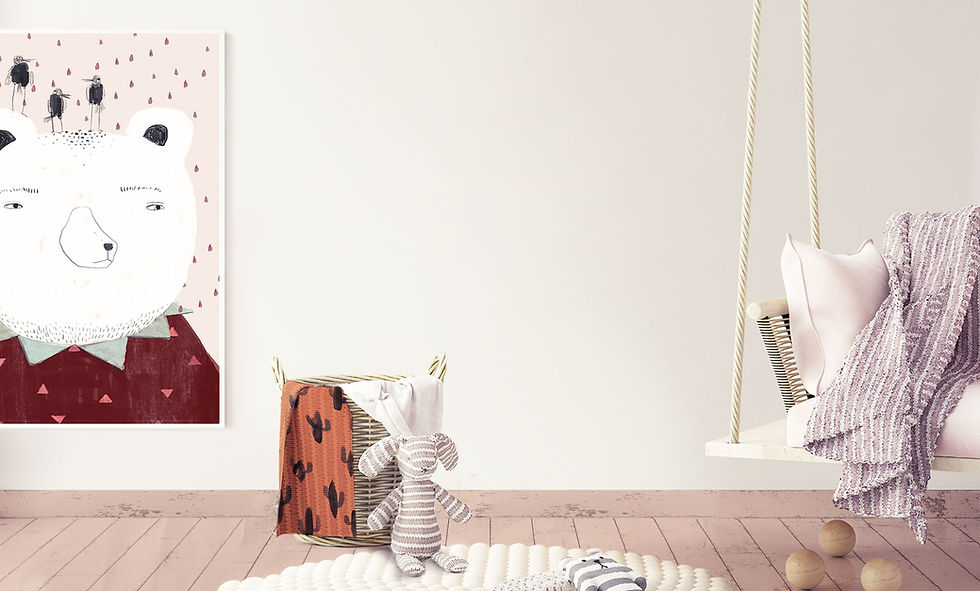
The Theory Behind Montessori Kids Rooms
The legend that is Maria Montessori was all about encouraging learning through independence. In talking of child education she said:
IT IS NOT ACQUIRED BY LISTENING TO WORDS, BUT IN VIRTUE OF EXPERIENCES IN WHICH THE CHILD ACTS ON HIS ENVIRONMENT. (MARIA MONTESSORI, THE ABSORBENT MIND)
The environment in which the child learns is key, because… well kids are small and clumsy; still learning the basics which we take for granted. So Montessori kids rooms need to be accessible for their inhabiter, in my case two toddlers still sussing out their gross and fine motor skills. The same principals that apply to a Montessori classroom can be applied to a Montessori bedroom:
ROOMS ARE CHILD SIZED WITH ACTIVITIES SET UP FOR SUCCESS AND ALLOW FREEDOM OF MOVEMENT AND CHOICE. THE ENVIRONMENT HAS TO BE SAFE FOR THE CHILD TO EXPLORE FREELY. THE ENVIRONMENT HAS TO BE READY AND BEAUTIFUL FOR THE CHILDREN SO IT INVITES THEM TO WORK. (DAILYMONTESSORI.COM)
I’m not suggesting you fill your kids room with light boxes and toys, the activities should be appropriate to the use of the room. A classroom will have easily accessible education ‘toys’, for a bedroom we want the successful activity to be sleep! But, unlike the crib, which does not allow freedom of choice, beds should be accessible and furniture and decor should be at child height so that they can explore their space freely.
What A Montessori Kids Room Looks Like
Putting these ideas into practice is the important bit, so lets take a look at the key elements of a Montessori kids room:
Floor bed:
The floor bed is probably the first thing people think of when planning Montessori kids rooms. Even babies, after a few weeks in a basinet or co-sleeping, can move to a mattress on the floor. This might seem crazy… what if they fall out? And they will. But they will roll, bounce and flop about like babies do, it’s all part of allowing them to become aware of their surroundings and their freedom to move. You may want to place a rug in the fall zone if you have hard wood floors for a softer landing, but be sure it’s heavy enough not to scrunch up and get caught around baby.
The classic framed floor bed shown in the picture above is not necessary. The important part is that the bed is low enough for little ones to get in and out independently. The house frame idea came about afterwards, as a response to the floor bed; some believe the bed feels more like a ‘proper’ bed, rather than a mattress thrown on the floor, others feel the framing of the sleep space creates a sense of enclosure and safety. Either way, I love them… I’m just not sure we can pull off two houses in one room for the twins!
If you’re in the market for a framed floor bed, Etsy is full of adorable handmade designs. Here are a few of my faves (the photo’s are links if you want to know more):
Accessible Clothes & Toys
The Montessori education encourages kids to dress themselves independently. We were caught out with this when Elsie joined the Montessori program in 1st Grade… oops, Mom had failed to teach her to tie her shoe laces, and Montessori kids learn this super early! Allowing kids to choose their own clothes is important in encouraging confidence in their own abilities, although it’s best to make choices easy, so keep the selection sensible. Choose child scale furniture and don’t overcrowd the room with toys and trinkets. Think deliberate and purposeful.
Accessible Lighting
Some might struggle with this one, but Elsie always had access to her own nightlight from age two and the novelty of fiddling with it soon wore off. Giving kids the chance to control the lighting level in their room via switch extensions or a low level lamp again reinforces the idea of independence and safety in their own space.
Neutral Colors
This is where I struggle a little because I love color! The North American Montessori Center says:
“WE CREATE A SPACE THAT BOTH CALMS THE SOUL AND SATISFIES THE INNATE DESIRE FOR ORDER.”
The general consensus is that keeping Montessori teaching spaces neutral in color reduces the chance for distraction and encourages a feeling of calm. I’m not going to disagree but I do like a little fun too so I’m torn… maybe just a little pop of color?
I hope you’re feeling prepared to set up your perfect Montessori kids room, I would love some pictures to share with our Facebook page… do send me your creations!
Commenti